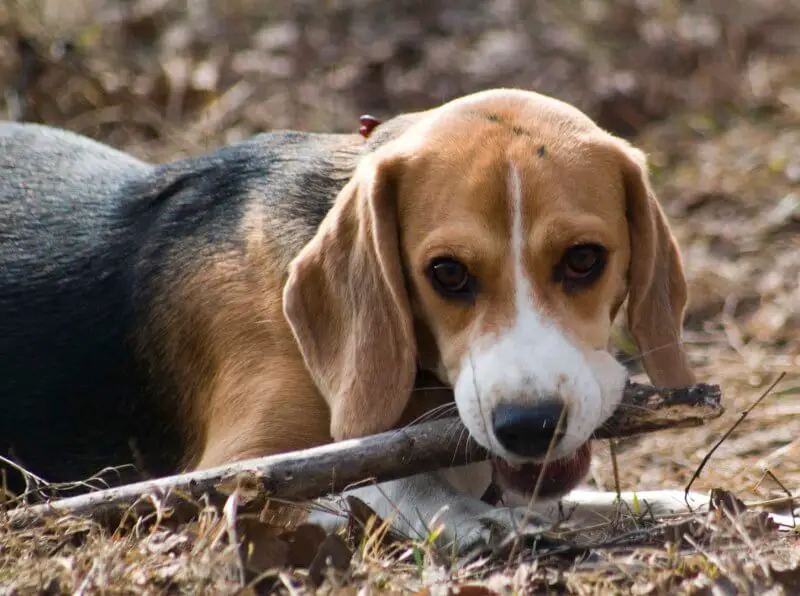Dogs love to nibble on wood. But instead of just chewing on sticks, bark, and branches, they also swallow the piece of wood and its splinters. Where does this behavior come from? And is wood-eating unhealthy for dogs?
The Essentials in Brief

- Chewing on wood is an instinctive behavior.
- It is good for the gums, teeth, and entire chewing system.
- Excessive nibbling on wood may indicate malnutrition or insufficient demands.
- Wood splinters that are swallowed are dangerous for the animal.
Wood, Branches, and Bark: Instinctive Behavior in Dogs
First of all, nibbling on wood is completely normal behavior in dogs. The four-legged friends just love to bite on bones, wood, or the like. Why? On the one hand, it serves as an occupation. On the other hand, chewing is a pleasant gum massage and cleans the biting tools. When the dog nibbles on sticks, he is following a behavior that is deeply rooted in the animal psyche. However, there are exceptions to the rule.
When is Wood Nibbling a Cause for Concern?
There is actually no cause for concern if the dog likes to chew on a stick. In some cases, however, the behavior is a sign of something else. Then there is a need for action.
Dog eats wood out of boredom
If the dog repeatedly nibbles on objects and wooden furniture without permission, this can indicate boredom. The dog may be under-challenged and find something to do on its own. When master and mistress scold, a portion of attention pops out. In this case, it is advisable to challenge your four-legged friend more – for example through dog sports, nose work, or tricks.
Eating wood is a symptom of deficiency
The dog not only chews on the stick but seems to be eating it purposefully? Does it eat wood, earth, and bark mulch? Does he hardly stop at other supposedly edible things such as paper and textiles? This may be a sign of deficiency symptoms – or hunger. In this case, changing the feed can be helpful. It is also advisable to adhere to the feeding instructions on the packaging. If nothing helps, a visit to the vet is the next step.
Our recommendation: Better to use chewing bones.
In order to satisfy the animal’s chewing instinct, wood is not absolutely necessary. On the contrary: special chewing bones are available from pet supplies. They specifically help against tartar and stimulate blood circulation – completely safely. As is well known, wood can splinter and thus harbors great dangers for the dog. This also applies if the animal eats wood and vomits. Large or small wood splinters can lead to serious injuries in the mouth and throat as well as in the digestive tract of the animal.

